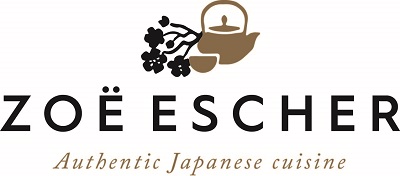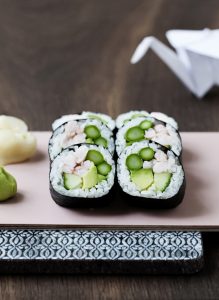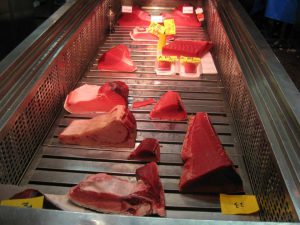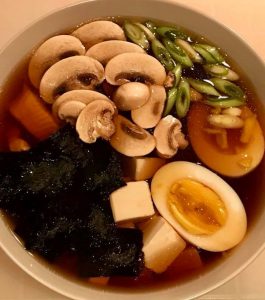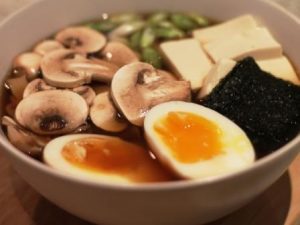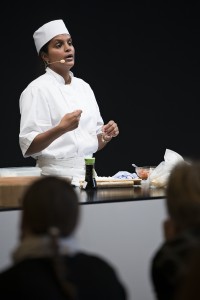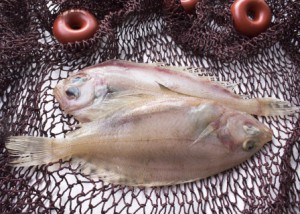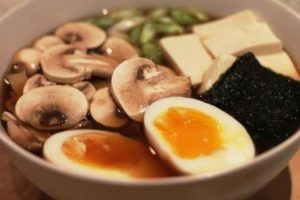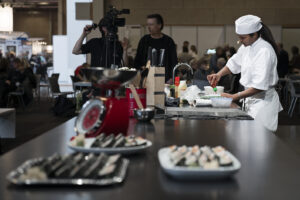
By eating sushi, you can easily meet your need for 600 grams of vegetables per day.
Most sushi rolls are packed with various vitamins and minerals. There are two types of sushi rolls that I have in mind here. One sushi roll is insite-out, where the sushi roll is covered with rice and the filling itself and the sushi seaweed are inside the roll. The other sushi roll is the large futomaki, which often contains several different vegetables.
In addition to the classic vegetables such as cucumber and avocado, the two sushi rolls often contain other vegetables such as pickled red onion, mango, spring onion, Jerusalem artichoke and sugar snap peas.
Depending on which sushi rolls you choose, you can almost cover the entire food pyramid during a sushi meal.
Another important and indispensable vegetable for sushi is nori seaweed. Not many people are aware of this, it is the vegetable in the world that contains the most vitamins and minerals. This applies to all types of seaweed sushi.
You need only a few tasty sushi rolls before you reach 600 grams of vegetables.
I have taught sushi and held pop-up sushi dinners and my impression is that most people eat around 900-1200 grams of vegetables during a sushi meal.
On the Sushi course for beginners, you learn step by step how to make tasty sushi that is boosted with vitamins and minerals. Tasty pieces of sushi that are suitable for everyday use and parties.
_
Zoë has held sushi courses and cooking classes for A. P. Moller – Maersk, Hugo Boss Nordic, Novo Nordisk, Novartis, Velux, Gorrissen Federspiel, Beierholm revision, Elbek & Vejrup and many more.
